Invisalign - Massapequa Park, NY • Long Island
The Clear Path Toward a Straight Smile
For decades, if you were unhappy with the alignment of your teeth because of crookedness or gaps, there was only one solution—uncomfortable and noticeable metal braces. Thankfully, dentistry has evolved by leaps and bounds over the past few decades, allowing Dr. Mohr to offer a treatment like Invisalign in Massapequa Park. With it, you can maintain your daily appearance and eat whatever you like while getting ever closer to the eye-catching smile you desire. Before you call to schedule a consultation, you can learn more about how it works below.
WHY CHOOSE DR. ALLAN S. MOHR FOR INVISALIGN?
- VOTED BEST LONG ISLAND COSMETIC DENTIST SEVERAL YEARS IN A ROW
- MEMBER OF THE AMERICAN ACADEMY OF COSMETIC DENTISTRY & AMERICAN SOCIETY FOR DENTAL AESTHETICS
- WORKS WITH “DREAM TEAM” OF LOCAL ORTHODONTISTS
How Invisalign Works
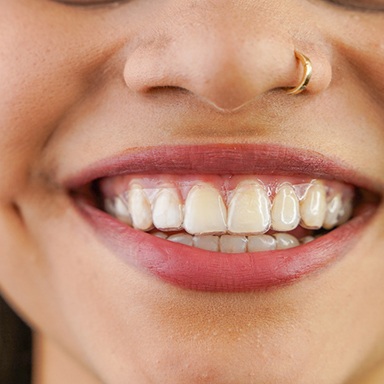
Invisalign relies on the same principle as traditional braces to straighten the teeth, in that it applies gentle but gradual pressure that shifts them into the ideal positions. Rather than using metal brackets and wires to do this, a patient just has to wear a progressive series of clear plastic aligner trays. Each tray is worn for about 20-22 hours a day for two weeks before they are switched out for the next set in the series.
Your particular aligners will be custom-made based on impressions and scans of your mouth that will help Dr. Mohr design your fully tailored treatment plan. Every six to eight weeks, you’ll come in for brief progress checks so your dentist can make sure everything is moving as expected.
Who Can Invisalign Help?
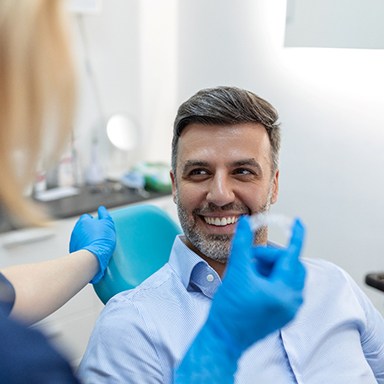
In the past, Invisalign was only used to make minor, cosmetically focused adjustments to the orientation of the teeth, but today, it’s extremely versatile. All of the most common orthodontic issues can now be resolved discreetly using Invisalign, such as…
Crowded Teeth
This is by far the most popular reason people want to have their teeth straightened. Crowded teeth present obvious aesthetic concerns, but they also make it more difficult to brush and floss properly, increasing someone’s risk of cavities and gum disease. Literally tens of millions of patients have been able to resolve this problem thanks to Invisalign.
Gaps Between Teeth
While too little space between the teeth is a problem, so is too much! Unwanted gaps stick out for all the wrong reasons and trap a lot of food and bacteria that can lead to infection and decay. Whether you have a space between your two front teeth or anywhere else, Invisalign can make it disappear.
Overbite
The upper teeth are supposed to slightly sit in front of the lower teeth when your mouth is closed, but an overbite is when they stick out too far. In addition to aesthetic issues, this can also make the teeth more likely to be chipped or broken during an accident.
Underbite
An underbite presents the opposite problem of an overbite—the lower teeth are too far ahead of the upper teeth. This can create functional issues, making chewing and speaking feel awkward, but it can also negatively affect the contours of the face, causing the chin to jut out.
Crossbite
Ideally, both rows of teeth should sit comfortably on top of each other when your mouth is closed. A crossbite occurs when the teeth are offset from left to right. The result can be some of the upper teeth sitting inside the lower teeth, or individual teeth may alternate, giving the smile a jagged look that isn’t ideal.
Open Bite
If a person sucks their thumb or finger for an extended time past the age of three or four, the result can be an open bite. This means that when the back teeth touch, the front teeth still don’t come together, leaving a noticeable gap. On top of speech/enunciation difficulties, an open bite can also make simple tasks like taking a drink awkward or tricky to do without spilling.
Benefits of Invisalign
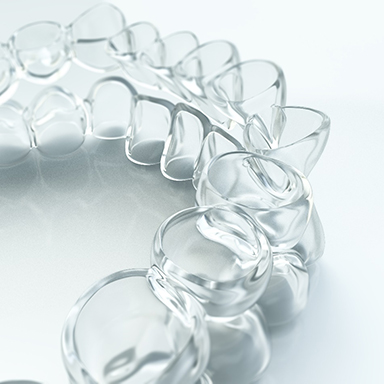
Tens of millions of people around the world as well as hundreds of patients within our practice have chosen to straighten their teeth with Invisalign instead of metal braces. While the reasons why might seem obvious, the truth is that Invisalign offers a wider array of benefits than most people realize.
Unnoticeable
Everyone can tell when a person has braces, but with Invisalign, the aligners practically disappear when placed on the teeth. You’ll never have to worry about friends or coworkers noticing them. Most people won’t even know you’re undergoing the treatment unless you tell them!
Comfortable
The aligners will be made just for you to ensure they fit the unique contours of your teeth and gums. The smooth plastic won’t irritate your cheeks or lips like regular braces. Many patients say they often forget they even have their aligners in!
Freedom
You don’t have to change your diet or dental hygiene routine with Invisalign. Just take your aligners out before eating or brushing. You can still enjoy your favorite treats throughout the process and will be able to brush and floss like normal, which will go a long way in preventing bad breath or cavities that can delay your timeline.
Quick Follow-Ups
With both braces and Invisalign, patients are asked to attend progress checkups so their dentist can make sure their teeth are moving as predicted. With braces, this is when the archwire is tightened and the elastics are changed out as well, which is quite a meticulous process. But with Invisalign, your dentist will just examine your teeth before providing your next set of aligners, giving you peace of mind and getting you in and out in as little as 10-15 minutes!
Speed
Most Invisalign treatments take anywhere from 12-18 months to complete, while braces often require one to three years. Plus, our practice works with a dream team of local specialists, including our handpicked orthodontist, who knows how to make treatment plans as efficient and effective as possible.
Protection
Many people unconsciously grind their teeth while they sleep, and Invisalign trays are actually strong enough that they can serve as a protective barrier, preventing damage to the enamel. Braces can’t do this, meaning Invisalign can accomplish much more than simply improve someone’s appearance!
How Much Does Invisalign Cost?
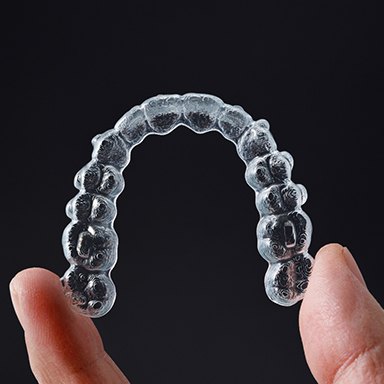
To be as effective as possible, Dr. Mohr puts together a unique treatment plan for each Invisalign patient. The number of aligners you need will be the main cost-determining factor, and that will be based on the current position of your teeth, what problems need to be resolved, and how you want your final result to look. At your initial consultation, our team will talk about the price as well as how we could potentially use your insurance or financing to make the treatment as affordable as possible.
Factors that Affect the Cost of Invisalign
- Number of Aligners: Minor, aesthetic-focused changes to the teeth may only require a few aligners (6-10), while bigger adjustments will require more (15+). In short, the more aligners you need, the more your treatment will cost.
- Starting Position of Your Teeth: This is strongly related to the point above. The number of aligners you require to achieve your desired result will largely depend on where your teeth and bite are at the beginning of treatment.
- Insurance Coverage: Some insurance plans offer broad orthodontic coverage that includes Invisalign for adult patients, while others will only help pay for metal braces for children. And if you have coverage, the actual amount can differ quite a bit from plan to plan.
Invisalign VS Do-It-Yourself-Aligners Which Costs More?
There are many companies these days that claim that if you want to straighten your teeth, all you need to do is download an app, and you’ll be able to have custom aligners sent to your house. While these businesses have plenty of marketing savvy, what they lack can leave you actually paying more to get the smile you want.
Adjustments often need to be made during a clear aligner treatment because the teeth don’t shift exactly as planned. While this is easy to do when partnering with a dentist or orthodontist, many of these do-it-yourself aligner brands will involve you never working directly with a dental professional. That means if something goes wrong, you’re on your own.
Without professional oversight, many patients end up with problems like pain, loose teeth, and even tooth loss. A quick internet search will point you toward multiple class-action lawsuits against DIY aligner providers because of these outcomes. In many cases, patients who opted for them ended up spending thousands more fixing their smiles compared to if they had just gotten Invisalign with a dentist in the first place.
Does Dental Insurance Cover Invisalign?
Many dental insurance plans do offer orthodontic benefits that can be applied to Invisalign, but as noted above, this isn’t consistent across all providers. Before you commit to treatment with us, we’ll verify your coverage and make sure you know exactly how much your insurance is willing to pay. We can also discuss low-to-no-interest financing if needed so you can start your Invisalign treatment right away and pay for it over time using comfortable monthly installments.
Invisalign FAQs
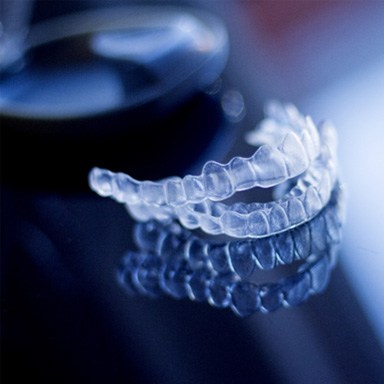
Does getting Invisalign hurt?
Your mouth will probably feel a bit sore right after starting Invisalign or switching to a new set of trays. Don’t worry—this means that it’s working! It is applying new pressure to your teeth to move them. Fortunately, this discomfort tends to be minor and goes away after a day or so. You can take OTC medication to make the adjustment period more comfortable as well.
How long does Invisalign take?
The length of each Invisalign case will vary depending on the starting position of someone’s teeth and how well their mouth responds to treatment. On average, the process takes about 12-18 months, which is much faster compared to metal braces which typically require about two to three years. After your exam and consultation with Dr. Mohr, he’ll be able to give you a much more definitive timeline estimate.
Will I need to wear a retainer after using Invisalign?
Yes! A retainer will make sure that your newly straightened teeth will maintain their new positions. Without it, they would slowly drift back to where they started. Usually, a patient will be asked to wear their retainer full-time right after finishing Invisalign. After a few months, they can then switch to just wearing it to bed.
What happens if I lose an Invisalign tray?
There’s no need to worry—this happens all the time. Just give our team a call, and we’ll let you know what to do next. Depending on where you are in your treatment timeline, you may be asked to put on your previous set of trays or progress to the next one a bit early. If a replacement is absolutely necessary, we will try to get one to you as quickly as possible. This won’t cost extra since the price of replacement trays will already be included in what you’re paying.
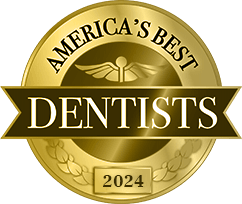

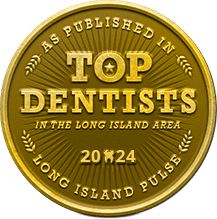

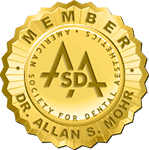
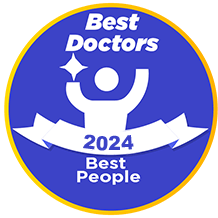
 Request
Request